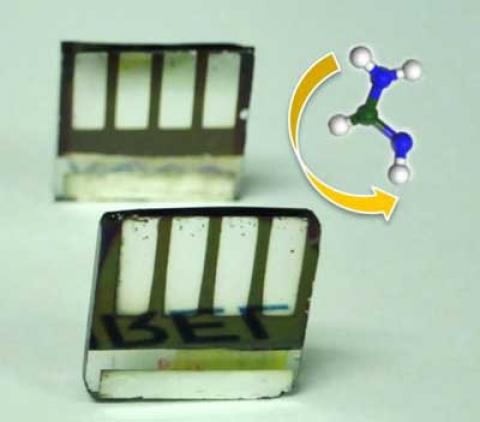Researchers from Brown University, the National Renewable Energy Laboratory (NREL) and the Chinese Academy of Sciences' Qingdao Institute of Bioenergy and Bioprocess Technology came up with a way of "flipping a chemical switch" that converts one type of perovskite into another - a type that has better thermal stability and is a better light absorber. This achievement could be one more step toward bringing perovskite solar cells to the mass market.

The researchers demonstrated their new technique for making solar cells that can be more stable at moderate temperatures than the perovskite solar cells that are currently being developed; The technique is said to be simple and has the potential to be scaled up.
Many perovskite solar cells produced today are made with of a type of perovskite called methylammonium lead triiodide (MAPbI3). The problem is that MAPbI3 tends to degrade at moderate temperatures, which is obviously not ideal for solar panels that must last for many years. As a result, there's a growing interest in solar cells that use a type of perovskite called formamidinium lead triiodide (FAPbI3) instead. Research suggests that solar cells based on FAPbI3 can be more efficient and more thermally stable than MAPbI3. However, thin films of FAPbI3 perovskites are harder to make than MAPbI3 even at laboratory scale, let alone making them large enough for commercial applications.
Part of the problem is that formamidinium has a different molecular shape than methylammonium. So as FAPbI3 crystals grow, they often lose the perovskite structure that is critical to absorbing light efficiently. This latest research shows a simple way to get around that problem. The team started by making high-quality MAPbI3 thin films using techniques they had developed previously. They then exposed those MAPbI3 thin films to formamidine gas at 150 degrees Celsius. The material instantly converted from MAPbI3 to FAPbI3 while preserving the vital microstructure and morphology of the original thin film.
"It's like flipping a switch," according to the scientists. The gas pulls out the methylammonium from the crystal structure and pushes in the formamidinium, and it does so without changing the morphology. This discovery relies on a lot of experience in making excellent quality MAPbI3 thin films and simply converting them to FAPbI3 thin films while maintaining that excellent quality.
Laboratory scale perovskite solar cells made using this new method showed efficiency of around 18% - not far off the 20%-25% achieved by silicon solar cells. The team plans to continue to work with the method in order to further improve the efficiency of the cells, but this initial work demonstrates a promising new fabrication route.